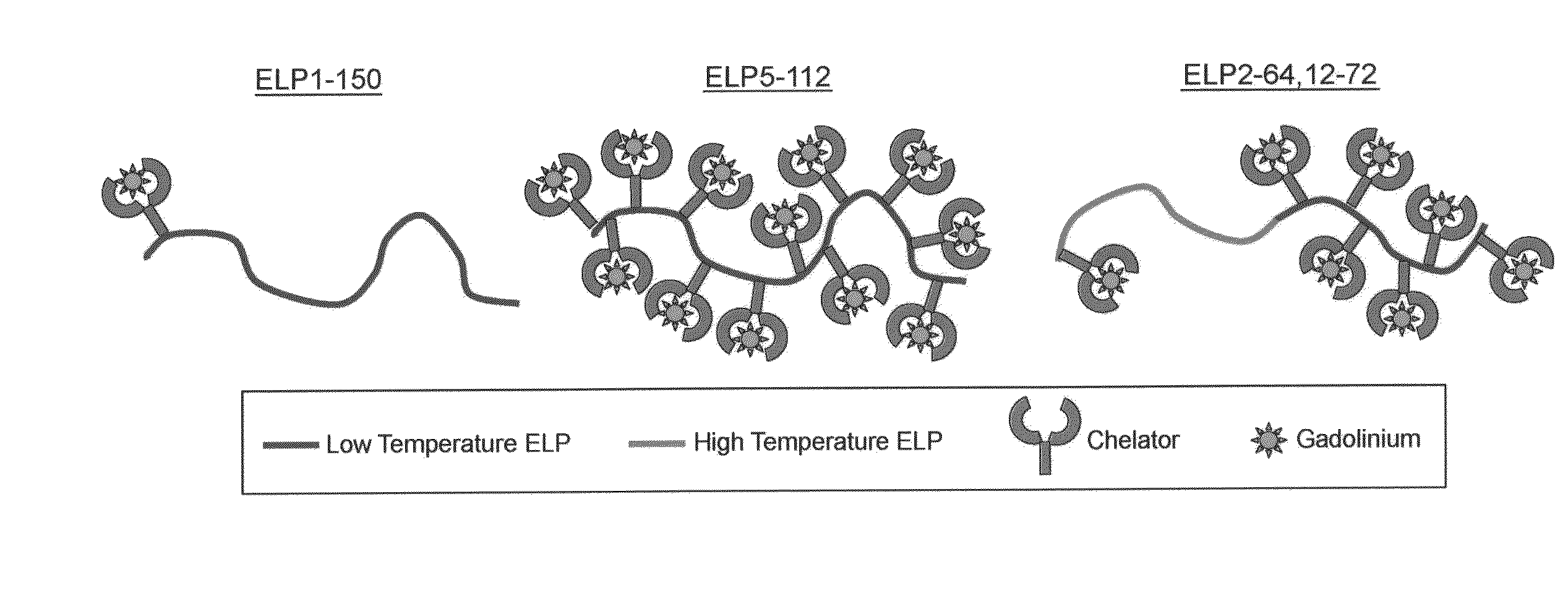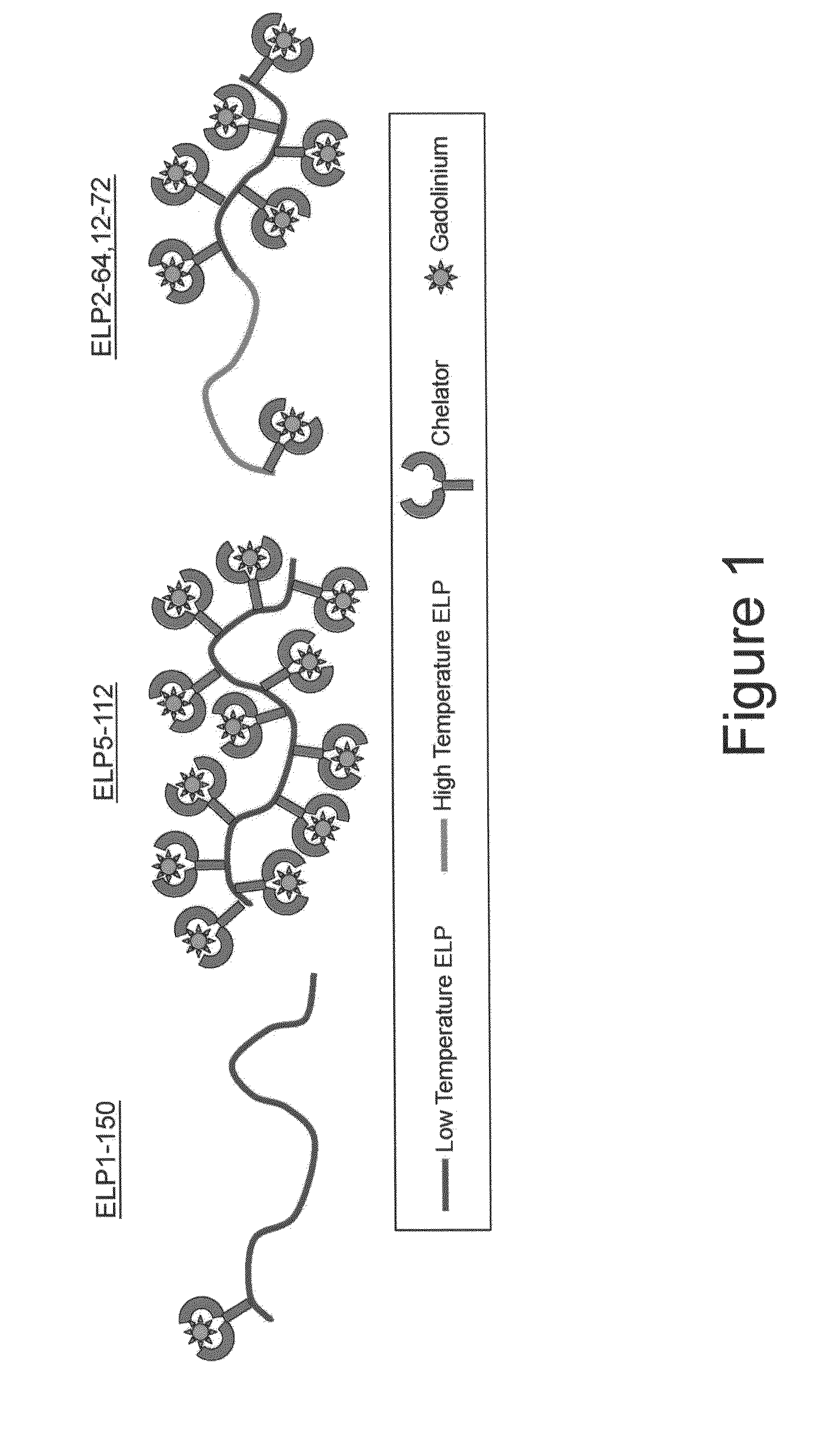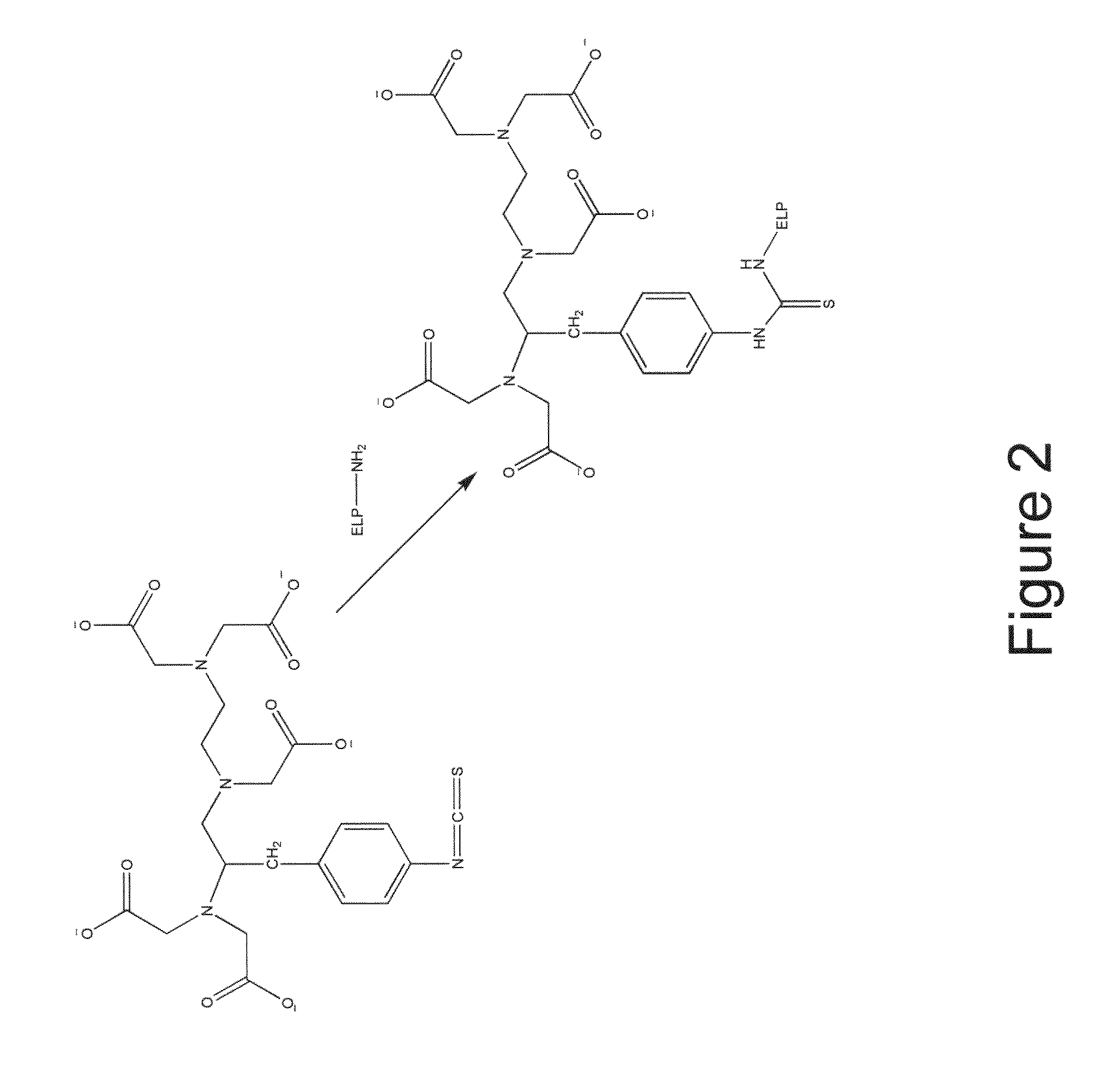Elastin-like polypeptide and gadolinium conjugate for magnetic resonance imaging
a magnetic resonance imaging and polypeptide technology, applied in the field of elastin-like polypeptides as magnetic resonance imaging, can solve the problems of toxic free gadolinium and not providing a good estimate of tissue blood volum
- Summary
- Abstract
- Description
- Claims
- Application Information
AI Technical Summary
Benefits of technology
Problems solved by technology
Method used
Image
Examples
example 1
Preparation of ELP-Gd Conjugates
[0149]Conjugation of ELP to bifunctional chelator: A scheme showing the conjugation of DTPA-ITC to a generic ELP is shown in FIG. 2, while a scheme showing the conjugation of DOTA-NHS to an ELP is shown in FIG. 3.
[0150]More particularly, the conjugation of DTPA-ITC to ELP1-150 (SEQ ID NO: 2) was carried out by preparing a 150 μM solution of ELP1-150 (SEQ ID NO: 2) in 100 mM sodium bicarbonate buffer (pH=8.4). An aqueous solution comprising a five-fold molar excess of DTPA-ITC (Macrocyclics, Dallas, Tex., United States of America) was added and the conjugation reaction was allowed to proceed for 2 hours at room temperature.
[0151]Similarly, the conjugation of DOTA-NHS to ELP1-150 (SEQ ID NO: 2) was carried out by preparing a 150 μM solution of ELP1-150 (SEQ ID NO: 2) in 100 mM sodium bicarbonate buffer (pH=8.4). A DMSO solution containing a five-fold molar excess of DOTA-NHS (Macrocyclics, Dallas, Tex., United States of America) was added. The conjugati...
example 2
Characterization of ELP-GD
[0154]The ELPs' thermal properties were characterized by monitoring the absorbance of an ELP solution using temperature dependent UV-Vis spectrophotometry. The turbidity profile (i.e., optical density (OD) versus temperature) for the ELP-Gd conjugates and their parent ELPs is shown in FIG. 4.
[0155]The ELP solution was transparent at low temperatures, but as the temperature was increased, the ELP underwent its inverse temperature phase transition and formed large aggregates that increased the absorbance of the solution (i.e., optical density). The Tt is defined as the temperature at the maximum in dOD / dT for the bulk aggregation. Overall, attaching Gd to an ELP increases its Tt. The ELPBC self-assembly was affected by the attachment of Gd. Without being bound to any one particular theory, the effects on ELPBC self-assembly can be due to the influence of the Gd ion and the chelator on the hydrophilicity of the low Tt block.
[0156]The thermal properties of the ...
example 3
MRI with ELP-Gd Conjugates
[0158]An image of two different ELP-Gd conjugates at several different concentrations is shown in FIG. 5. The image was taken with a T1-weighted spin echo sequence and a repetition time (Tr) of 150 ms. At this repetition time, a higher concentration of gadolinium created a more intense signal. However, the influence of Tr on signal intensity is complex, such that it is best to determine the longitudinal relaxation rate, T1, for each concentration of ELP-Gd conjugate.
[0159]The signal intensity for a T1-weighted image may be approximated with the following equation to gain T1.
Signal=PD[1−exp(−Tr / T1)]+background (1)
PD is the proton density, while the background is the intensity at zero gadolinium concentration. A plot of the signal versus Tr is shown in FIG. 6 for the ELP5-112 (SEQ ID NO: 3)-Gd conjugate. Samples with a higher concentration of gadolinium relax the protons faster than samples with a lower concentration of gadolinium.
[0160]The relaxivity (R) d...
PUM
| Property | Measurement | Unit |
|---|---|---|
| Diameter | aaaaa | aaaaa |
| Atomic weight | aaaaa | aaaaa |
| Atomic weight | aaaaa | aaaaa |
Abstract
Description
Claims
Application Information
 Login to View More
Login to View More - R&D
- Intellectual Property
- Life Sciences
- Materials
- Tech Scout
- Unparalleled Data Quality
- Higher Quality Content
- 60% Fewer Hallucinations
Browse by: Latest US Patents, China's latest patents, Technical Efficacy Thesaurus, Application Domain, Technology Topic, Popular Technical Reports.
© 2025 PatSnap. All rights reserved.Legal|Privacy policy|Modern Slavery Act Transparency Statement|Sitemap|About US| Contact US: help@patsnap.com



